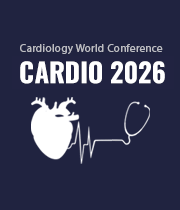Complications Of Cardiac Ablation
Cardiac ablation, a procedure designed to address heart rhythm disorders by disrupting abnormal electrical signals, is not without its set of potential complications. Among these, bleeding or infection at the catheter insertion site poses a common risk. Furthermore, there is a potential for damage to nearby blood vessels or nerves, heightening the possibility of complications such as blood clots or inadvertent injury to surrounding organs. In some instances, cardiac ablation might lead to the unintended consequence of creating new heart rhythm issues or exacerbating existing ones. While these complications are relatively common, more severe but rare outcomes may include damage to the heart's electrical system, necessitating the use of a pacemaker or implantable cardioverter-defibrillator (ICD). As with any medical intervention, patients should engage in thorough discussions with their healthcare providers to weigh the benefits against the potential risks and make informed decisions regarding cardiac ablation.

Arthur J Siegel
Massachusetts General Hospital, United States
Sergey Suchkov
N. D. Zelinskii Institute for Organic Chemistry of the Russian Academy of Sciences, Russian Federation
Narendra Kumar
HeartbeatsZ Academy, United Kingdom
Arthur J Siegel
Massachusetts General Hospital, United States
Yong Xiao Wang
Albany Medical Center, United States
Narendra Kumar
HeartbeatsZ Academy, United Kingdom



Title : New recommendations for the prevention of sudden cardiac death in athletes and recreational sports
Sekib Sokolovic, ASA Hospital Sarajevo, Bosnia and Herzegowina
Title : Coronary revascularization in patients with diabetes: Prospects for stenting in patients with type 1 diabetes and coronary artery disease
Mekhman N Mamedov, National Research Center for Therapy and Preventive Medicine, Russian Federation
Title : An adult case of polysplenia syndrome associated with sinus node dysfunction
Apoorva Tripathi, Oxford University Hospitals, United Kingdom
Title : Personalized and precision medicine (PPM) as a unique healthcare model through biodesign-driven translational applications and cardiology-related healthcare marketing to secure the human healthcare and biosafety
Sergey Suchkov, N. D. Zelinskii Institute for Organic Chemistry of the Russian Academy of Sciences, Russian Federation
Title : A unique cell-driven phenomenon in the heart and the promising future of the innovative translational tools to manage cardiac self-renewal and regeneration
Sergey Suchkov, N. D. Zelinskii Institute for Organic Chemistry of the Russian Academy of Sciences, Russian Federation
Title : Young hearts at risk: Hidden cardiovascular damage and the role of social determinants of health among youth with type 1 diabetes in Kenya
Phoebe Wamalwa, Ministry of Health, Kenya